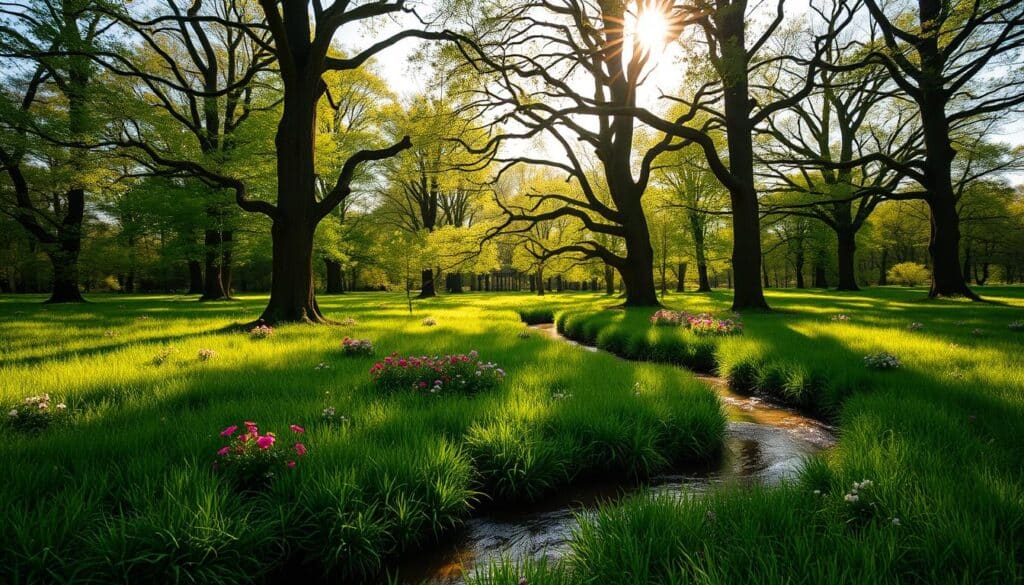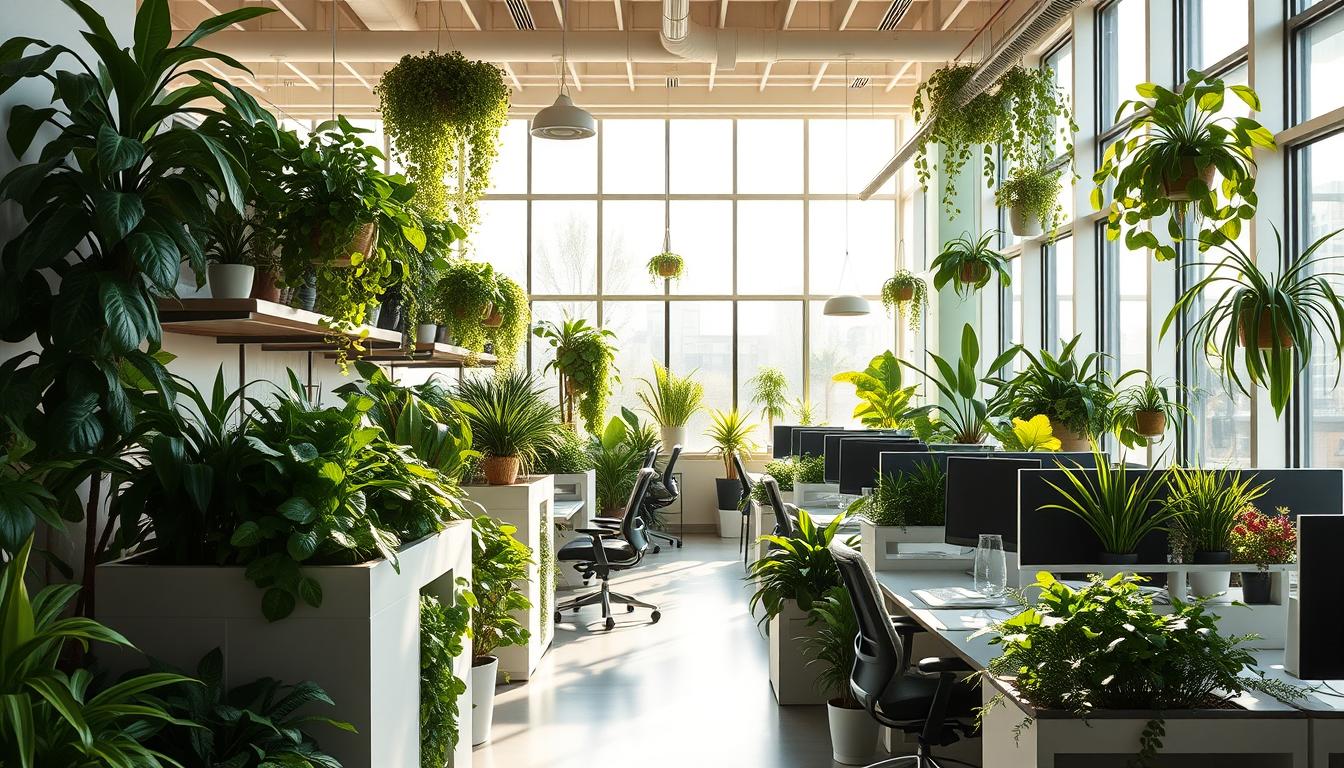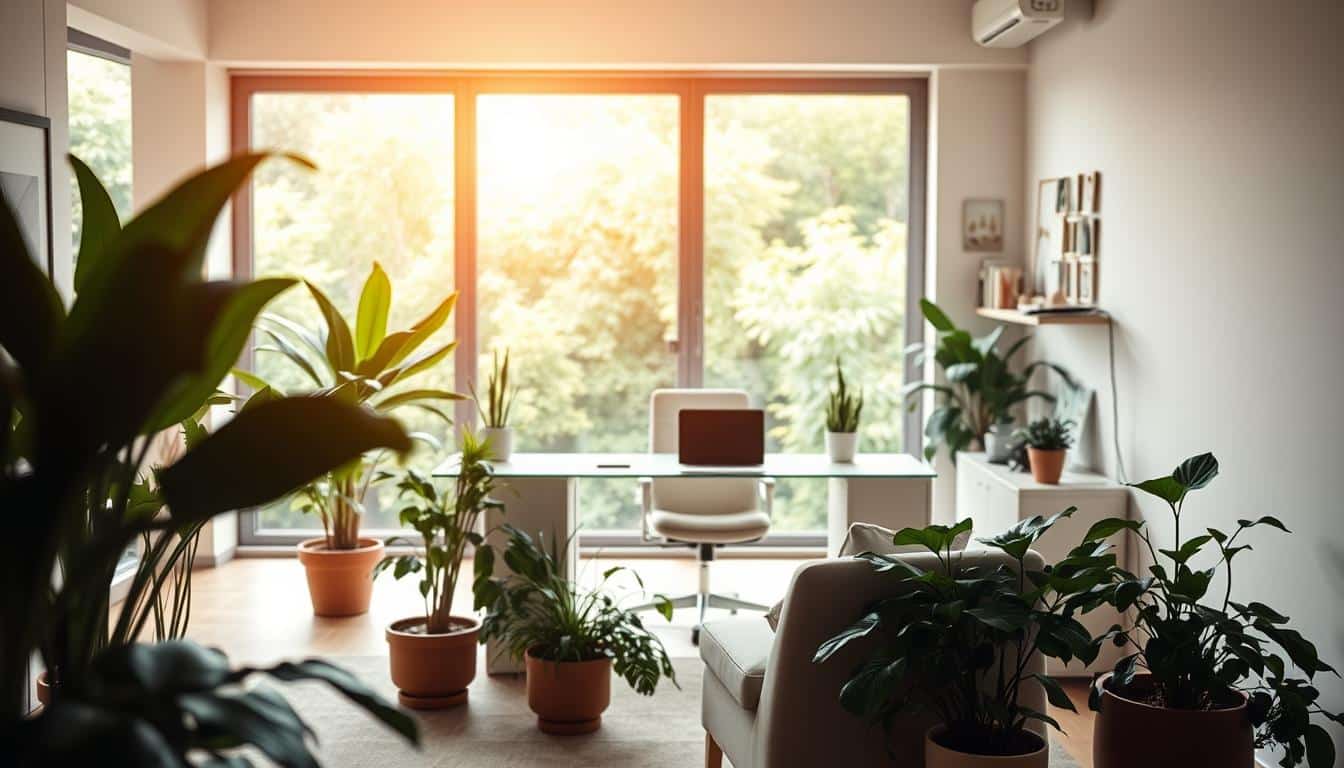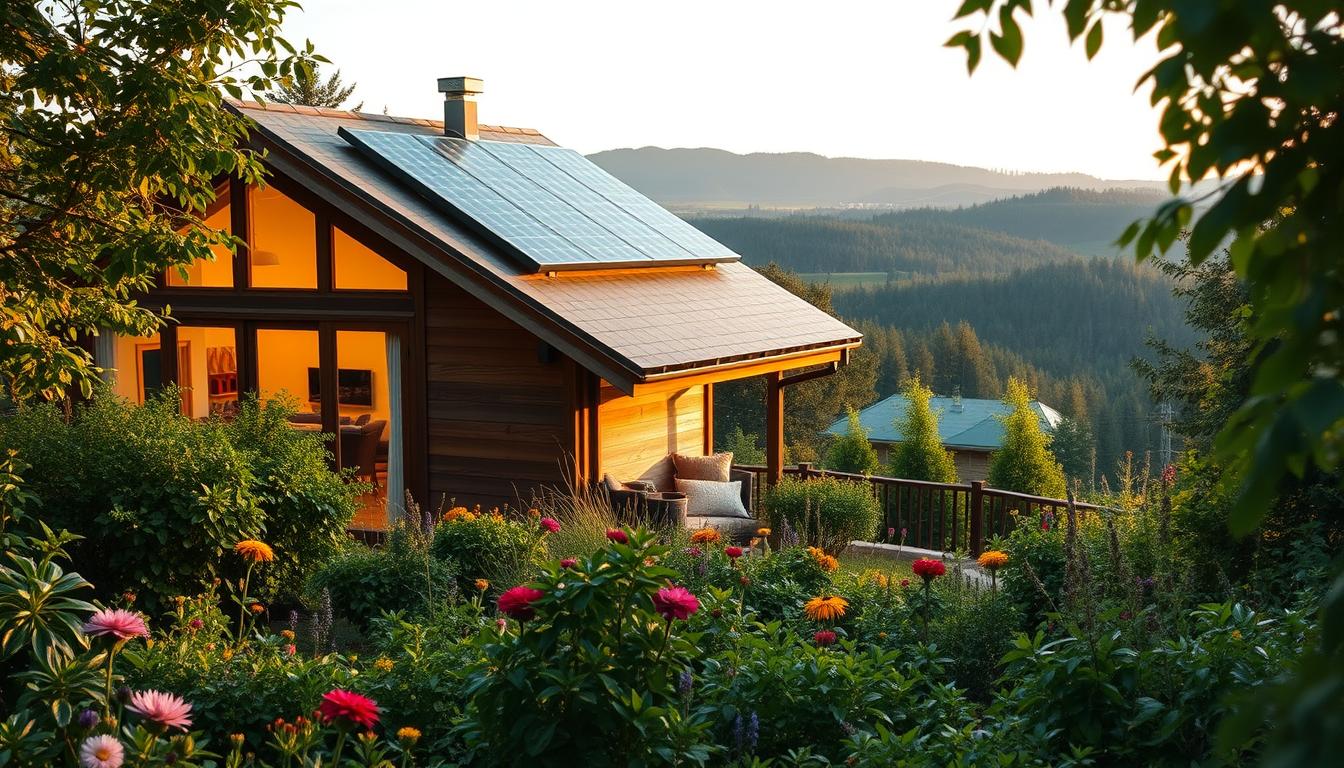Today, being eco-friendly is very important. The idea of green boundaries represents a big change in city and building planning. Using plants to divide spaces does more than just separate areas. It makes our surroundings better.
When we add green walls and other plants to our places, we make them more welcoming. This way, we improve life for people and help the planet too. As cities grow, finding green solutions becomes critical for those designing and building spaces.
Introduction to Green Boundaries
Green boundaries are very important in busy cities. As cities grow and get noisier, we need them more. Using plants to divide spaces can make these places work better.
Adding nature into designs is great for looks and for making places more comfortable. This makes work areas better. People feel calmer and more focused around plants.
Biophilic design connects us with nature, improving health and teamwork. Adding plants and natural things to spaces makes them beautiful and sustainable.

What are Green Boundaries?
Green boundaries use plants to split up spaces. This can include walls of plants, bushes, and more. They make places look good while also serving a purpose. These plant partitions make indoor and outdoor areas welcoming. They also help divide the space as needed.
These green dividers do more than just separate areas. They make the environment better. Surrounded by plants, people feel more connected and happier. Greenery brings calmness, which is super important today. By using plants to create boundaries, spaces remain open. This makes them more useable and nice to be in.
The growth of cities shows why green boundaries are key. They are a step towards living in a way that’s good for the planet. Green boundaries remind us that nature is important in our lives. Plants in our living and working spaces make them beautiful and alive.
Benefits of Natural Partitioning using Vegetation
Natural partitioning with plants offers many perks for both personal well-being and workspace vibes. Plant walls help cleanse the air by grabbing toxins and adding more oxygen indoors. This makes the office air healthier and the space nicer for everyone to work in.
Improved Air Quality
Plant walls make the air better to breathe. They pull out bad pollutants, keeping the air fresh and clean. This clean air helps people work better and stay healthier. Workers take fewer sick days and can focus more, showing how plant walls are good for offices.
Enhanced Privacy in Workspaces
Open offices sometimes make privacy hard. Plant walls act as natural barriers. They lower noise and keep things private, which helps people feel more comfortable and work better. This setup lets everyone do their tasks well without getting distracted.
Visual Appeal and Aesthetic Value
Plant walls make offices look and feel nicer. Adding plants brings in beauty and lifts everyone’s spirits and creativity. You can choose different plants to match the company’s style or your own taste. This adds a personal touch, making the office a better place.
Designing with Plants: Practical Applications
Adding plants to architecture makes spaces lively and calm. Using plants well can improve both homes and work areas. It makes them better to live and work in. Think about different types of plants that fit in various places.
To do well in planting indoors, remember these tips:
- Scale Matters: Pick plant sizes that fit well in the room. Big rooms do well with tall plants for depth. Small spaces are great for little plants.
- Variety is Key: Use different kinds of plants like ferns, succulents, and flowers. This adds beauty and variety.
- Placement Considerations: Put plants where they get enough light and can be easily taken care of. Good placement also helps air flow and makes spaces relaxing.
Many studies show how plant design helps in buildings. For example, offices with green walls make workers more creative and happy. Homes with lots of plants improve how people feel. Knowing about these uses helps designers make places that look good, work well, and feel comfortable.
Types of Vegetation for Effective Partitioning
Picking the right plants is key for good green barriers. The top choices include evergreen bushes and blooming plants. They not just do the job but also make the area look better.
Evergreen Plants
Evergreens give privacy all year. They keep their leaves, so you always have coverage and beauty.
- Boxwood: Known for its dense growth, boxwood gives a neat appearance and is easy to shape.
- Holly: This shrub shines with its shiny leaves and red berries. It’s good for many places.
- Yew: Yew fits well in both sunlight and shade. This makes it a flexible pick.
Flowering Shrubs
Flowering bushes make your green dividers look amazing. They separate areas and bring color all year.
- Hydrangea: Famous for big blooms in different shades, hydrangea likes partial shade and gives great cover.
- Forsythia: It bursts with bright yellow flowers in early spring. Forsythia grows fast and makes a solid fence.
- Azalea: Azaleas have stunning flowers in many colors. They are perfect dividers in acidic soil.
Environmental Impact of Plant Walls
Putting plant walls in cities brings big environmental upsides. These green walls help clean the air by catching pollutants and adding oxygen. Through photosynthesis, they take in carbon dioxide. This helps fight climate change by storing carbon.
Plant walls also welcome many kinds of creatures, boosting city biodiversity. They give bugs, birds, and more a place to live. This helps local ecosystems stay strong against environmental shifts.
Plant walls absorb rainwater, which fights flooding by lessening runoff. They make cities better equipped for extreme weather. Plus, they cool down cities, tackling the urban heat island effect for cooler places to live.
Natural Partitioning using Vegetation: The Biophilic Design Approach
The concept of biophilic design brings nature into buildings. This helps people feel closer to nature. It’s key in making spaces with plants part of the layout. This approach doesn’t just look good. It also boosts health and how well people work in these places.
Studies show being around plants can make you less stressed and healthier mentally. The link between our minds and nature underlines the good that plants do. They make places calm, sparking creativity and focus. Using plants to divide space creates a nice work area. It lets workers enjoy these good effects.
Using plants as dividers makes the environment cozy and private, without losing space usefulness. Picking the right plants can turn boring spots into lively, refreshing areas. Studies have found that work areas with nature in mind make people happier at work. They also get more done. This proves nature is important in design.
Choosing biophilic design by using plants shows we value nature in our daily spaces more and more. As people learn about its benefits, more embrace this idea. This creates healthier, more motivating places to be.
Maintenance Tips for Green Boundaries
Keeping your plant walls vibrant and functional takes work. You need a few key steps for effective care. These steps help your greenery stay beautiful and promote sustainable keeping.
Watering right is vital, especially when it’s hot. Water deeply but not too often. Let the soil dry a bit before watering again. This approach helps roots grow strong and cuts down on water use.
Pruning is important for shape and health. Cut off dead or sick branches to boost new growth. This also keeps pests away. Try organic ways to fight pests to keep your plants and environment safe.
Each type of plant needs different amounts of light. Knowing what your green boundaries need is key. Watch how much sun they get. This stops them from growing weak or getting damaged.
- Water deeply but infrequently.
- Prune regularly to promote new growth.
- Inspect plants weekly for pests and diseases.
- Know your plants’ light requirements.
Using these tips will help your green boundaries thrive. They’ll make your space look good and be eco-friendly.
Comparative Analysis: Green vs. Traditional Boundaries
Green boundaries and traditional barriers are very different in how they work and their benefits. Green boundaries use living plants to divide spaces. This not only makes places look better but also helps the environment. In contrast, traditional barriers like concrete walls do their main job of dividing space. Yet, they don’t offer the extra visual and environmental perks of green boundaries.
Looking at costs, it’s important to think about both initial and long-term expenses. Starting a green boundary can be pricy because of plant and design costs. But, as time goes by, they tend to save money. They do this by improving insulation, making air cleaner, and naturally cooling areas. These benefits make them a smart choice financially over time.
Green boundaries do more than just divide spaces. They support wildlife, make us feel mentally better, and help us connect with nature. Traditional barriers might separate areas well. But, they don’t add value or improve the feel of a place the way green boundaries do.
This comparison shows how thinking about dividing spaces is changing. The positives of using green boundaries are becoming more recognized over traditional methods.
Conclusion
The topic of green barriers shows the great benefits of using plants for natural dividing. By using green design, people and groups can make things look better. They can also improve the air and keep private spaces in workplaces. This way of doing things is becoming more popular.
The importance of eco-friendly design in cities and buildings is growing. More people now want to mix nature with built spaces. Green barriers are a big step towards living together peacefully with nature.
We should think about using plants to divide spaces. Green barriers promise a better future not just for us, but for the planet. This is a step towards better-looking and more sustainable places for everyone.



